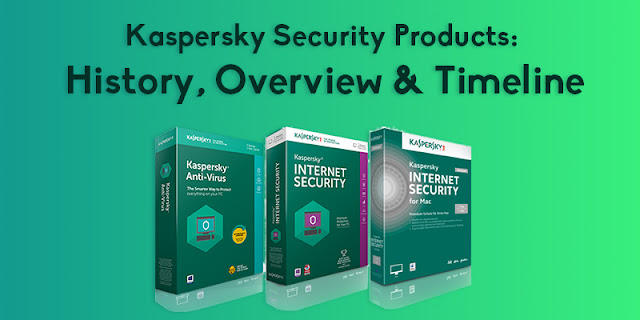Kaspersky is one of those iconic names amongst the cybersecurity brands worldwide that offers comprehensive protection against viruses, malware, identity thefts, and other outrageous cyber threats for your devices. It is operational in about 200 nations and has 35 branch offices in 31 nations. With about 3800 highly-qualified professionals at work, Kaspersky gives all-around security to your devices.
Overview
Kaspersky was first introduced to the world in 1997. Kaspersky’s advanced threat intelligence and security specialization are gradually changing into comprehensive protection products and services. With these products and services, Kaspersky secures the functions and environment of Businesses, crucial infrastructure, governments, and consumers worldwide. The company’s advanced protection portfolio comprises top-class endpoint security and numerous advanced security products and services to tackle sophisticated and outrageous threats. With nearly 400 million active user policies, Kaspersky products are protecting the users’ online life every day.
Foundation of Kaspersky
The first edition of Kaspersky Lab’s antivirus software was developed by Eugene Kaspersky in 1989 when the Cascade Virus spread worldwide. The early editions were based on only 40 virus definitions and were tested by sharing with friends and family members. The software development by Eugene stayed continuous at KAMI, and soon an Anti Viral Toolkit Pro (AVP) product launched in 1992. Eugene got recognition in 1994 after Hamburg University awarded Eugene’s software in an analytical competition.
In 1997, Eugene, his wife Natalya, and Alexy De-Monderik established Kaspersky Lab after leaving KAMI. They formed this company to continue the development of the antivirus product, then called AVP. They had to change the company name AVP to Kaspersky Anti-Virus after an American firm registered the AVP trademark in the US.
In 1998, a student from Taiwan launched a virus, “CIH.” During the first 21 days of the Virus spread, Kaspersky Lab’s AVP was found to be the only software to remove it. This leads to an increment in the demand in the market and eventually led to sync the deals with security firms in Japan, Finland, and Germany to integrate AVP into their software.
WIRED mentioned the Kaspersky software “advanced for the time.” One such example was the first software to check for the viruses in an isolated quarantine. Kaspersky’s revenue took a boost of 280 percent between the years 1998 and 2000 that included 60 percent of that revenue came from foreign sales. Soon, Kaspersky launched its offices in various countries like UK, Poland, Holland, and China and, after some stable years, also made quite a good expansion by adding Germany, France, the US, and Japan.
At the beginning of 2000, the cybersecurity brand had only 65 workers and was selling its products in more than 40 countries. Kaspersky launched new offices in South East Asia and the Middle East in 2008 and South Africa in 2009, and soon it also expanded to India, the Middle East, and Africa in 2010.
General Atlantic purchased a twenty percent share of Kaspersky Lab for $200 million, expecting to help the company to become public. After some time, the decision was taken to stay private, and Kaspersky paid for the shares acquired by General Atlantic to re-acquire the shares again.
Several executive departures took place in the year 2011, and 2014 after the re-purchasing of shares, the main cause of these departures were disputes over going public and over Eugene’s management style.
In August month of 2015, two former Kaspersky workers filed the case that the firm has shown the modified files into the VirusTotal antivirus storage to trick application from Kaspersky rivals into triggering false positives in virus and malware scans. A right motive is that Eugene allegedly was furious at rivals perceived to be injustice-free-riding on Kaspersky’s malware inventories via the open-source VirusTotal database. The company refused to agree with the allegations.
On his personal blog, Eugene Kaspersky gave a comparison for the accusations of unsubstantiated conspiracy theories. Reuters followed up by publishing leaked emails reportedly from Kaspersky, alluding to “falsies” and “rubbing out” foreign competitors; Kaspersky Lab announced the emails “may not be legitimate and were obtained from unknown sources that have an improper agenda.”
In 2016, Kaspersky executive Ruslan Stoyanov got into custody by Russian Authorities on the charges of improperly dating his work at Kaspersky. In 2019, he was given a conviction of treason.
Kaspersky: Partners
The Kaspersky Anti-Virus engine also gives the privilege to other protection vendors to empower their products effectively. Some of those vendors are Check Point, Bluecoat, Juniper Networks, Netintelligence, Clearswift, FrontBridge, Netasq, Wedge Networks, and more. If taken on a scale, over 120 companies have purchased the licenses technology from Kaspersky Lab. Kaspersky Lab also has numerous partnerships with these technology companies.
Bans & Reports
Since 2015, Kaspersky was reported to have close similarities to the Russian government by several western media outlets, and at last, the US government itself. In 2017, President Donald Trump signed the legislation to ban software of Kaspersky on desktops used in the government sectors. US government institutions were not allowed to buy and install Kaspersky software on their desktops and other devices.
Conclusion
Kaspersky has always been listed as one of the best antivirus and security providers in the field of cybersecurity. We hope this article will help you in understanding the history and recent timeline of Kaspersky.
Source: SoftwareBlogsWeb





No comments:
Post a Comment